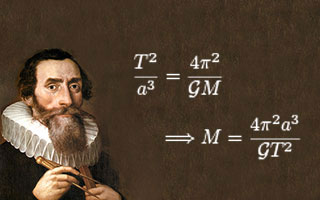Created by the teaching team of the Paris Observatory, this new MOOC is oriented around the various techniques used by astrophysicists to measure the masses of the planets, the exoplanets, comets and other celestial bodies.
Very complete, it surveys a variety of methods : not only those of historical interests, but also those emerging directly from the very latest advances in astronomical research.

Almost 2 000 persons registered at the opening
A scientific bacalareat is needed to follow the courses of this MOOC which already
had 2000 registered participants at the opening.
The programme is spread over five weeks :
- Monday, September 14th 2015 : Introduction and cosmic zoology
- Monday, September 21st 2015 : Kepler’s laws : history and a mathermatical recap
- Monday September 28th 2015 : Kepler’s laws : definition and demonstrations
- Monday October 5th 2015 : Weighing the Universe with the help of Kepler’s third law
- Monday October 12th : From Kepler to now
- Monday October 19th : end of the course
Certificate of success
This MOOC does not lead to a diploma, but instead to a certificate which attests that candidates have followed the course completely.
A weekly test is proposed, to guage the knowledge acquired.
In addition : a discussion forum enables direct contact with members of the teaching team.
The team
This MOOC was designed by a pedagogical team of the "Unité de Formation et d’Enseignement (UFE)" of the Paris Observatory, made up of astronomers and researcher-lecturers :

- Caroline Barban
- Emeric Bron
- Alain Doressoundiram
The technical realisation was done by the engineers of the TICE (technologies de l’information et de la communication pour l’enseignement) cell of the UFE.
The MOOC was partially financed by Paris Sciences et Lettres Research University, a reseach university which includes 25 prestigious French institutions in higher education and research and of which the Paris Observatory is a founding member.
With this new MOOC, the Paris Observatory enriches its distance learning methods, for which it was already a forerunner, offering since many years a a rich selection of on-line training programmes tutored by astronomers, as well as many freely available digital resources : web sites, videos, software tools.
